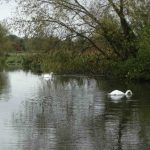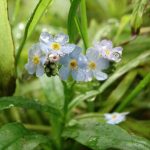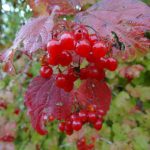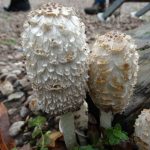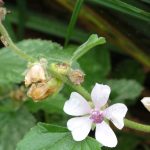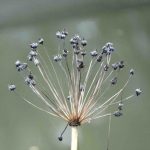Renée Grayer led a walk on the still, damp morning of Wednesday 17 October, starting from the Plowden Arms at Shiplake. First stop was the churchyard of Shiplake Church, which had a fine Indian Bean Tree. Over the wall in the Shiplake College grounds was a strange flint and brick tower which had apparently been built as a water tower in Victorian times. Calls of Ring-necked Parakeets were heard for the first time – there would be plenty more during the morning. A short diversion led to a pond with clear water near the river. Small fish could be seen, together with flowers of Water Forget-me-not and Water Mint. Guelder-rose berries were waxy red in the hedgerows and there were curtains of Hops and strings of White Bryony berries. A clump of Shaggy Inkcaps was found near the College boatyard. The walk continued downstream along the bank of the Thames. Two Mute Swans were busy feeding on the river and there were numbers of pond skaters on the surface of the water. Lesser Water-parsnip and Gypsywort were found in wet woodland beside the path and the leaves of Loddon Lily were just beginning to poke up through the mud. One by one, three small mice emerged from somewhere close to people’s feet and scampered into thicker vegetation. Continuing downstream, the path led past two enormous plane trees. Upright Hedge-parsley, Bristly Ox-tongue and Common Fleabane were still in flower and there were seed spikes of Purple Loosestrife. A Marsh-mallow plant on the river bank had a single flower. When the plant was discovered last year, it was a new species for Oxfordshire. Since then, it has also been found at a second site closer to Oxford. Seed heads of Flowering Rush could be seen at the water’s edge. The route led away from the river for a brief stretch, first past houses and then below the elevated section of the Henley railway line, before returning to an open section of river bank. A Kingfisher flew low over the water. Flowers of Lady’s Bedstraw and Common Toadflax were added to the day’s tally and plants of Water Figwort and Square-stalked St John’s-wort were also noted. The return route led away from the river, following lanes and tracks back to the Plowden Arms.
Pictures by Laurie Haseler

